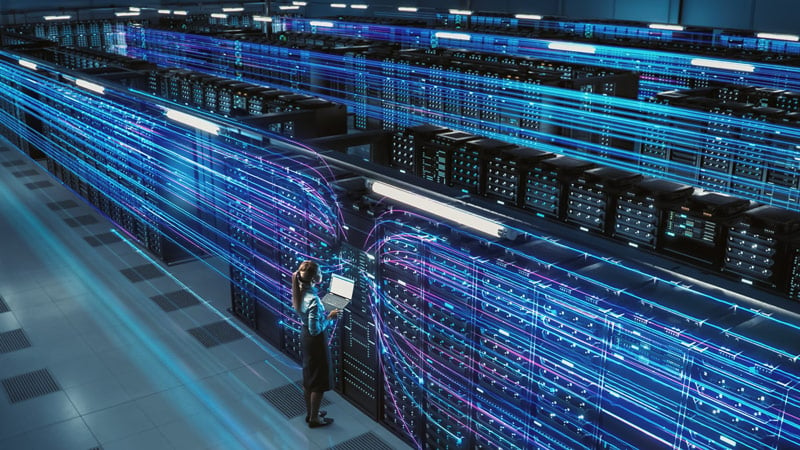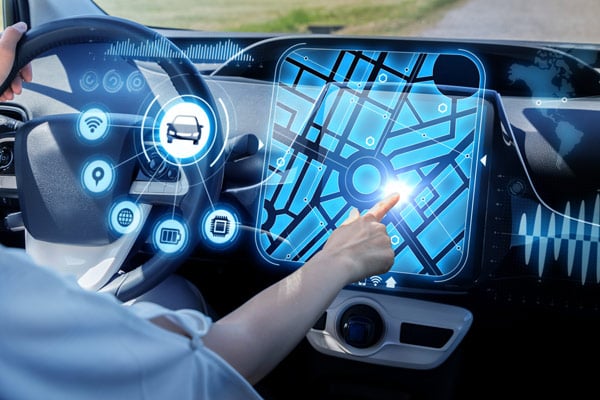
Beyond Smart Devices: The Expansive Reach of IoT
- 4 minute read
-
Author: Mobica
The Internet of Things is a vast network of devices that are interconnected through the internet, activated and functioning through sensors, actuators, and the cloud. Each smart device is capable of gathering, sending, and receiving data to perform a range of practical tasks, from the coffee machine knowing what time to turn on in the kitchen, to industrial tech activating in a workshop under recognised conditions. The ecosystem can include anything from smartphones to modern vehicles, each with the potential of working together to collect and analyse real-time information, then perform and complete tasks without any human input.
Statistics as of 2024 postulate that there are 17 billion IoT devices already in use globally, with forecasts predicting almost 30 billion by 2030, and considering just 5 years ago there were as little as 8 billion devices, it is clear to see that IoT tech is growing consistently and rapidly.
The IoT network has long since expanded from standalone smart gadgets like thermostats that are capable of sending and receiving isolated signals. Modern devices make up parts of integrated systems, capable of communicating seamlessly across operating platforms. With the plethora of modern IoT devices constantly harnessing data from diverse sources, they are capable of ‘learning’ the insights that drive their efficiency, and as they learn, can be personalised to an individual’s or business’s needs in many innovative ways. Going forward, we will look at the foundations of IoT, and how its reach is affecting our livelihoods.
Cloud Computing
Cloud computing provides the support needed for the vast network of IoT devices to function, and without it, there would be no place for data to be stored, processed, or analysed, effectively breaking down the communication between sensor and activity. In the industrial sector for example, where IoT devices are used to gather data on machinery performance, a working cloud computing system is vital for equipment maintenance, where IoT tech is used to identify impending failures before they disrupt operations. Regardless of the environment, whether it is at home or in the workplace, the cloud essentially makes up the backbone of IoT capabilities and is as necessary as the devices themselves.
Transforming Everyday Life
IoT’s progression over the past years has fundamentally changed how we interact with the digital and physical world, and is most easily demonstrated using the modern smart home domain and the gadgets we wear. Most homes now have voice-activated assistants that are capable of preparing and playing music lists for you, or walking you through a recipe for dinner through the medium of various smart devices. Applications are also capable of going further than the household, with wearable devices monitoring health metrics and tracking fitness activities, demonstrating how IoT can elevate personal experiences for individuals. Most people are interacting with IoT devices and consider them second nature without realising the extensive and intricate web of data that is constantly being transferred for their digital livelihoods to function.
There is a plethora of ways IoT is not only simplifying our lives, but also enriching our daily interactions with technology. The potential for almost any experience to be more tailored and enjoyable is growing, with some areas in particular improving drastically with every new IoT integration:
Software Defined Vehicles
Software Defined Vehicles (SDVs) leverage cloud computing and IoT technology to improve the driving experience of their users, and looking ahead, will likely become the norm for new cars, where software in the electronic control unit (ECU) interacts with and controls the vehicle’s actions, as opposed to the hardware most none-EV vehicles still operate with today.
Just like smartphones and other smart devices, Software Defined Vehicles receive frequent updates that introduce new functionalities to the ECU or improve existing ones. From entertainment systems and assisted driving functions, SDV control units are capable of controlling a large network of internal software. The advent of fully autonomous driving is also just around the corner for SDVs, and will require vehicles to interact with each other, effectively becoming IoT devices themselves as they learn to navigate and interact without human intervention.
Mobile POS (Point of Sale)
Another essential improvement IoT has made for everyday living is the development of Mobile POS systems, bringing unprecedented flexibility to businesses, customers, and their ability to process transactions. MPOS leverages IoT connectivity to complete sales across a range of settings, from upgrading establishments to mobile food vans. Through processing transactions, mobile POS systems, in sync with IoT, can collect data that is analysed to generate insights into customer behaviour, as well as provide information for inventory management, enabling businesses to tailor their operations, and ultimately enhance the customer experience across all sectors of the retail industry.
Revolutionising Industries
Looking further into industry development, as the Internet of Things continues to grow, and with almost every digital device created in the modern year having the capability of connecting to the cloud, IoT is helping to redefine the way numerous industries operate with its innovative applications:
- Manufacturing: IoT is continuing to transform manufacturing with the development of smart factories. Automation and real-time monitoring, as well as the previously mentioned ability to monitor equipment health, have seen great improvements in production processes. Outside of the factory, supply chains are also optimised through large scale data aggregation in the cloud, ensuring materials are effectively managed and goods are delivered on time.
- Healthcare: Healthcare has seen a greatly positive impact from IoT services, where facilities like telemedicine can effectively bring medical consultations and healthcare to remote locations. Wearable devices that also track vital signs in real-time have granted patients personalised healthcare in ways that previously required unsustainable hospital visits and equipment usage. With the data that IoT devices gather, patients can access personalised healthcare tailored to the needs of their genetic profiles and lifestyles.
- Agriculture: Agriculture is another industry that has grown with the advancements of IoT, with farmers gaining access to devices that can monitor crop health and soil conditions, as well as gather weather data to activate automated maintenance technology across sites such as sprinklers or feeders. IoT effectively helps farmers support sustainable agriculture practices through reduced water usage, waste reduction, and more importantly, increased crop yields as a result of long-term data gathering.
The Future of IoT
The Internet of Things is on course to continue improving the daily life of every one of us, setting higher industry standards in the workplace as well as facilitating a semi-automated home life, where the alarm clock goes off and signals the coffee machine and toaster to start getting the day prepared. As the current iteration of Artificial Intelligence (AI) and Machine Learning (ML) continues to develop, it is not so difficult to envision a network of technology that relies very little on human interaction, and in fact functions through communications across a global network.
Interconnected IoT devices based in set environments can already learn from data, predict outcomes, and make automated decisions, and as AI develops with technologies like autonomous machinery, we are on course to see technology across the entire IoT becoming autonomous. It sounds as scary as it does promising, but with the potential for societal and environmental benefits being vast, the continued evolution of IoT will go on to shape a more connected, sustainable, and intelligent world for us all.
Enter the era of Industry 4.0 with Mobica Talent
Mobica offers Talent-as-a-Service (TaaS) to companies looking to build new and exciting IoT solutions. Our Mobicans boast a diverse skill set across the entire tech stack, combining all the necessary abilities to provide IoT solutions that align with your dreams. We can help you develop anything from embedded systems for device communication to gateway protocols and cloud-based backend infrastructure. Don’t hesitate to contact Mobica for talent, and get your tech project underway today.


